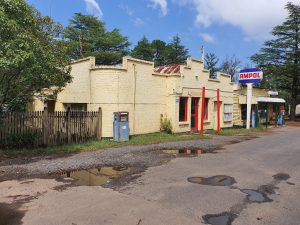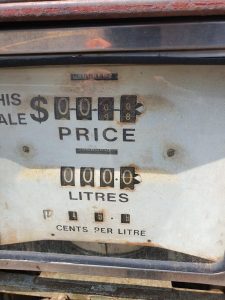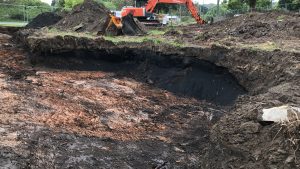As Environmental Consultants we cover Sydney, Melbourne and Brisbane including the entire state of each of these capitals. Anderson Environmental Pty Ltd provides a range of Environmental Assessment Services including Ecological Assessments. We are often asked questions regarding the Environmental Site Assessment process in relation to Site Contamination. Often clients have not undertaken a SEPP55 Preliminary Site Investigation (sometimes termed a Stage 1 or Phase 1 Environmental Site Assessment) before and are trying to gain an understanding of the process and the cost and any other items that may come up or need to be covered as part of this process. Note that SEPP 55 is for NSW however all states in Australia use the National Environmental Protection Measure (NEPM). Often a Contamination Report is requested by Council as part of a Development Application and/or rezoning. These assessments are also sometimes undertaken for Due Diligence Real Estate Transactions such as purchase or lease changes and are often for clean-up of contaminated sites such as former Service Stations, Dry Cleaners, Industrial Sites or sites with dumped materials etc etc.
The most common question we receive relates to the Cost of a Preliminary Site Investigation (PSI) or the more in depth Detailed Site Investigation (DSI). Here we examine the cost of the Preliminary Site Investigation and what it entails.
What is the cost of a Preliminary Site Investigation (PSI) ?
This depends on a number of factors. The size of the site along with its location, previous use and potential for a complex history both of the site itself and nearby sites are factors which impact the cost of the assessment. Some sites comprise farms with a simple site history over many decades while other sites represent industrial sites with complex site histories and many differing neighbouring sites which need to be considered which may have resulted in contamination to the site being assessed. While there are no set guidelines in Australia as as to the distance from the subject site to which neighbouring sites should be assessed a generally accepted standard from North American guidelines is within a 250m radius from your site boundary. The required search results from simple sites can result in 20 pages while more complex sites can result in a few hundred pages of background historical data. Industrial sites with complex layouts and multiple buildings and industrial processes require considerable time for the on site assessment and often have large amounts of records to examine. We consider the site and work required to undertake a compliant report when we provide clients with a price for a Preliminary Site Investigation. This is important as very often the report has to be relied upon by councils to approve a development application and sometimes lenders for loan applications. For sellers having an up to date report for sites with potential historical contamination risks provides potential buyers with an instant appreciation of any potential risks with the purchase. This often places the seller at an advantage over other sellers of commercial or rural property.
What does a Preliminary Site Investigation Cover?
A Preliminary Site Investigation is a detailed review of the history of a site (using a combination of sources including aerial photos, governmental records, site walkovers and detailed site inspections, interviews, review of previous site and nearby reports, and other available information). This role of the PSI is to identify Areas of Potential Environmental Concern (APECs) which are parts of the site that may have environmental issues which may have resulted in contamination. It also examines other sites nearby which may represent a risk to the subject site.
Sometimes clients ask for an “Elevated Preliminary Site Investigation ” which is often scoped to undertake some limited testing of some areas the client may have identified themselves as a potential risk or concern. This does not constitute a a Detailed Site Investigation (DSI) however does add extra information for the Preliminary Site Investigation.
A thorough PSI can provide evidence of potential environmental liability due to contamination with a property. Once you purchase a property which is contaminated then in almost all cases it is difficult or almost impossible to get the clean-up paid for by the former owner.
With coverage of the whole of New South Wales, Victoria and Queensland and also experience in the USA our clients use our knowledge and experience to minimise their risk with property purchases. Why not give us a call today to discuss you specific project or purchase.
Anderson Environmental Pty Ltd recently undertook a Contamination Assessment (Detailed Site Investigation – Phase II Environmental Site Assessment) under SEPP 55. The work involved assessing the potential impacts of the previous use of the site in regard to potential contamination from the petrol station in relation to a proposed bakery being developed on the site.

Whenever any site is purchased (or preferably before purchase) it is important to ensure it is fit for the purpose for which it is proposed to be used. It is also important to ensure you are not purchasing a liability by purchasing a site with contamination and large clean-up costs. Councils generally require a Preliminary Site Investigation (Stage 1 or Phase 1 Environmental Site Assessment) in the first instance. This preliminary report is to determine the previous use of a site in relation to its potential risk in relation to soil and/or groundwater contamination or hazardous chemicals or materials which may be present. This preliminary assessment provides a professional opinion in relation to the risk of contamination on the site and whether additional work in the form of a Detailed Site Investigation (often termed a Stage 2 or Phase 2 Environmental Site Assessment) is required. A Detailed Site Investigation is to target potential contaminants and potential contamination based on the results of the Preliminary Site Investigation (PSI under SEPP55). In this particular case the site had been used in the past as a Petrol Station with historic use dating back decades. It has been quite a while since fuel was 49 cents per litre and the age of the pumps also provides evidence of the age of the previous use. The Ampol sign reminds me of the “I’m as Australian as Ampol” advertising from the 1980’s and 1990’s.

Our work as Environmental and Geotechnical/Contamination Consultants takes us throughout NSW, Queensland and Victoria. We get to see and undertake assessments on a broad range of sites. We recommend obtaining a Preliminary Site Investigation before any site is purchased as once the site is purchased as the landowner you now own the contamination and clean up costs can be extremely expensive.
We utilise our own drilling equipment for most jobs and in some cases draw on our large number of associations with other drilling companies to undertake thorough and detailed assessments. We have been asked for professional advice from the NSW EPA in the past and keep up to date with the latest legislative requirements and sampling techniques and equipment.
Please give us a call on 1300 302 507 for assistance with your next property purchase or project.
We were recently contacted, as we often are by a previous client to assist them with a Housing Development project which resulted in them saving approximately $450,000. They had a SEPP 55 Preliminary Site Investigation, a Detailed Site Investigation (DSI), and a Remedial Action Plan (RAP) undertaken by another company and were very concerned with the expected cost for the Contaminated Site Remediation which was in excess of $600,000. As the project was to supply a lower cost housing alternative for the less privileged the cost was of particular concern. Upon review of the documentation in the previous reports it became apparent that the site had not been characterised correctly in relation to the extent of the potential contamination along with its waste classification in relation to the leachate potential of the contaminant (in this case Lead). This resulted in an overestimation of the amount of material to be disposed of from the site and an incorrect waste classification of the material to disposed of which placed it in the highest waste category of Hazardous. These two factors resulted in the very high estimated cost for the site remediation.

Anderson Environmental undertook Geotechnical Drilling of the site with a combination of solid flight and direct push techniques to characterise the lateral and vertical extent of the contaminated material which was present. Laboratory analysis utilised the Toxicity Characteristic Leaching Procedure (TCLP) to determine the leachability of the contaminant. This test is to determine the Waste Classification of the material which resulted in it being classified as Restricted Solid Waste resulting in a much lower site remediation cost than Hazardous Waste.
With the accurate information from the Geotechnical Drilling and Site Characterisation along with the correct Waste Classification a Phase 2 Environmental Site Assessment (Detailed Site Investigation) report and Remedial Action Plan (RAP) was written. This resulted in less contaminated material to be disposed of at a lower waste classification rating thus significantly reducing the site remediation cost.
The client was extremely pleased with the project outcome and the saving of $450k which resulted in a huge cost saving for an extremely viable project outcome.
As Environmental Consultants servicing Sydney, Brisbane and Melbourne we have full time experience since 1992. We assist clients with providing services covering SEPP 55 (Preliminary and Detailed Site Investigations) Remedial Action Plans (RAP), on-site Remediation and Site Validation and Closure. We are often undertaking Risk Assessments for Pre-Purchase Inspections for clients before the purchase of development sites. Please give us a call or contact us via the “Contact Us” page of our website so we can address your specific project requirements.
At Anderson Environmental we are often asked by our clients to provide advice early on in the development assessment process. Often this commences even before a client decides to purchase a property and it is generally the larger and more experienced property developers who know the value of getting a thorough Due Diligence Pre-Purchase Inspection undertaken. Often we are advising client’s on properties in the millions and have recently advised a client on a 10 million dollar property before they decided to purchase. The viability of any project is critical to assess early on in the project planning process.
With the implementation of the new Biodiversity Conservation Act 2016 (BC Act 2016) there can be significant offset costs for offsetting the clearance of native vegetation and these costs are significantly higher than they have been previously. In certain cases where there are Critically Endangered Ecological Communities or Critical Habitat for Endangered Species there may be a Significant And Irreversible Impact (SAII) which cannot be offset thus leasing to a significant limitation for any development. In addition consideration must be given to if the site contains mapped areas of Outstanding Biodiversity Values.
So what is the role of a Pre-Purchase Ecological Inspection ?
Most often a Due Diligence Pre-Purchase Inspection for potential Ecological issues can involve background searches and a scoping site inspection to identify any potential issues. Many clients however request a more detailed assessment of the site by way of a 5-part Test of Significance and/or Biodiversity Development Assessment Report (BDAR). These are more detailed reports which can form part of a Statement of Environmental Effects to support the development application. The more detailed the assessment, the more accurate the information available for planning.
Project success starts very early on by determining whether a project is a “Go” or “No Go” and Due Diligence early on (often even before the purchase of the property) is critical in such a determination. It is important for working out risks and to provide a sound cost benefit analysis.
As experienced Environmental Consultants with experience since 1992 we assist our clients with a wide range of Ecological Assessments.
Why not give us a call on 1300 302 507 to discuss your next project.




